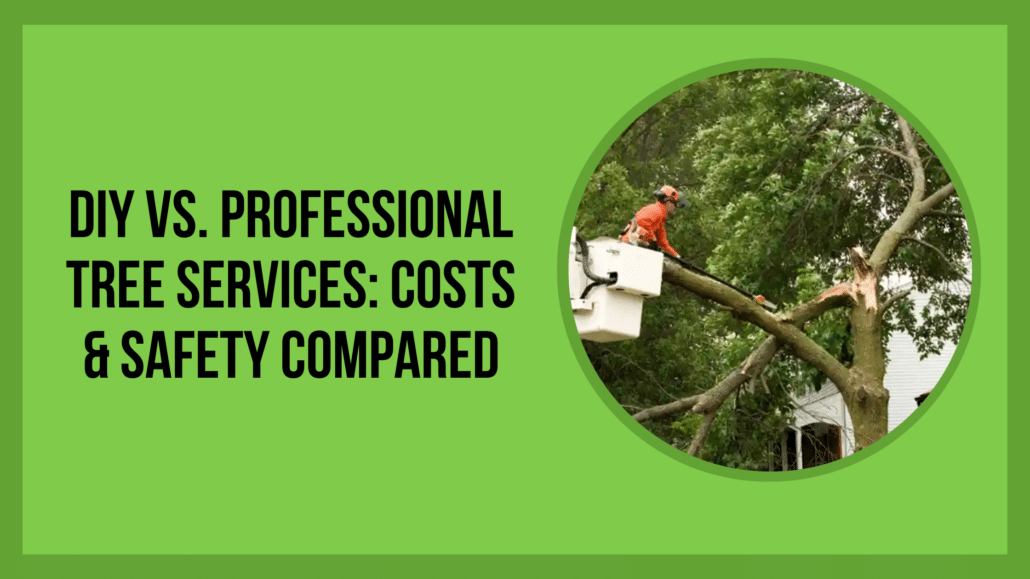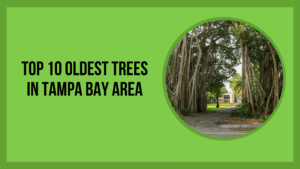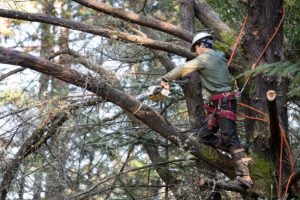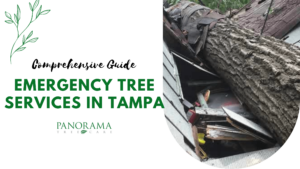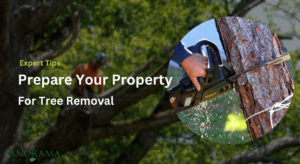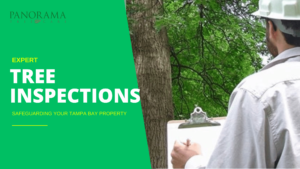Taking care of the trees on your property might seem straightforward, but it’s more complex than meets the eye. Trees add beauty, shade, and value to your home, but maintaining them properly requires effort and expertise.
Many homeowners grapple with the decision: should they tackle tree care on their own or hire professionals?
This article explores the key differences in cost, safety, and quality between DIY tree care and hiring professional services, helping you make an informed choice.
Understanding Tree Care Needs
Tree care goes beyond just pruning a few branches. Whether you need tree removal, trimming, or stump grinding, each task demands a unique approach.
Proper tree care ensures the health of your trees and prevents potential hazards like falling limbs or overgrown roots damaging your property.
For example, services like tree root barrier installation can prevent costly foundation issues, while mangrove trimming complies with local environmental regulations.
If you’re considering tasks like topiary design or tree relocation, professional expertise ensures your trees thrive in the long run.
Cost Analysis
When comparing the costs of DIY tree care and hiring professional tree services, it’s essential to look beyond the surface.
While DIY might seem cheaper at first, the hidden costs and potential risks often tilt the scale in favor of professional services. Let’s break it down in detail.
DIY Costs
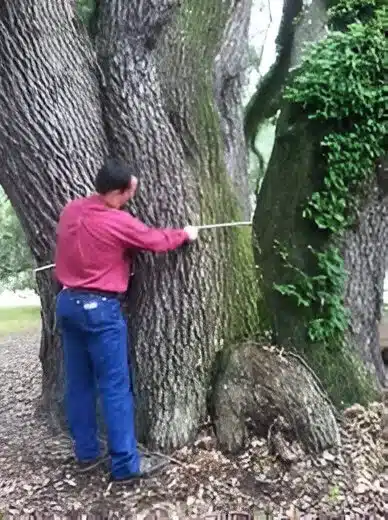
At first glance, handling tree care yourself may appear budget-friendly. The main expenses include purchasing or renting equipment such as chainsaws, pruning shears, safety harnesses, ladders, and protective gear.
For small jobs, this might seem manageable. However, even these tools come with maintenance costs. A well-functioning chainsaw, for example, requires regular sharpening, oiling, and sometimes repairs.
Beyond equipment, consider the value of your time. Tree care can be time-consuming, especially for larger or more complex tasks. You might need to spend hours researching proper techniques or troubleshooting equipment issues.
If mistakes occur—such as cutting a branch incorrectly or damaging nearby structures—you could face additional costs to fix those errors.
Another overlooked factor is the potential for injury. Without proper training, accidents can happen, leading to medical bills or even time off work. These unexpected costs can make DIY much more expensive than initially anticipated.
Professional Costs
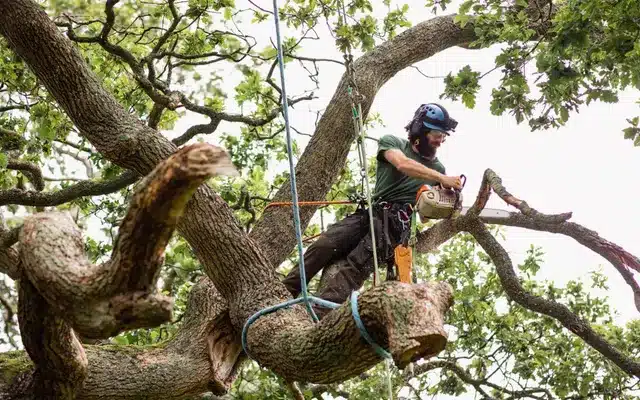
Hiring professional tree services might seem like a significant expense at first, but it provides considerable value for the money.
A reputable company like Panorama Tree Service includes more than just the labor in their fees. As the best professional tree service Tampa, Panorama delivers certified care, safety, and long-term value for every property.
Their pricing often covers:
- Specialized equipment you won’t need to purchase or rent.
- Highly trained professionals who complete the job efficiently and safely.
- Insurance and liability coverage in case of accidents or damage.
- Clean-up services, saving you additional time and effort.
For example, the cost of tree removal depends on factors such as tree size, location, and complexity. While this might range from a few hundred to over a thousand dollars, it’s a one-time expense that ensures the job is done correctly.
Services like stump grinding or trimming can be bundled to maximize value, saving you from needing multiple contractors or additional tools.
Long-Term Savings
One of the most significant advantages of professional services is long-term cost efficiency. Improper DIY tree care, such as over-pruning or leaving a stump behind, can lead to regrowth, pest infestations, or even disease that harms other trees on your property.
Professionals, however, use precise techniques to ensure proper removal, trimming, and health management, preventing future issues.
Moreover, regular professional maintenance can extend the lifespan of your trees, reducing the need for costly removals down the line.
By investing in professional services, you’re not just paying for immediate work but also for the long-term value they bring to your property.
Safety Comparison
Tree care is inherently risky, whether you’re pruning branches, removing a tree, or grinding a stump. When comparing DIY approaches to hiring professionals, safety is one of the most critical factors to consider.
Mishandling tools, failing to assess risks, or overlooking hazards can lead to serious consequences. Let’s dive into the safety aspects of both DIY and professional tree care.
Risks of DIY Tree Care
The idea of taking tree care into your own hands might sound appealing, but it’s not without significant dangers.
Injury Risk: Tree care often involves heavy equipment like chainsaws, wood chippers, and pole pruners. Without proper training, these tools can lead to severe injuries such as deep cuts, broken bones, or worse.
Climbing trees or working at heights adds another layer of danger, as falls are a leading cause of injuries during DIY tree work.
Lack of Proper Equipment: Most homeowners lack access to advanced safety gear, such as industrial-grade harnesses, helmets, or protective clothing.
Even if rented, this equipment might not fit properly or provide adequate protection for high-risk tasks like branch removal near power lines.
Unseen Hazards: DIYers often overlook hidden dangers, such as decayed wood inside a tree, weakened branches, or underground utility lines near roots.
These hazards can lead to sudden accidents, such as a tree collapsing in an unintended direction or roots damaging essential infrastructure.
Environmental Risks: Without understanding tree biology and proper cutting techniques, homeowners may harm not only the tree but also the surrounding environment.
Incorrect pruning can cause stress to the tree, making it more vulnerable to pests and diseases.
Safety Measures Used by Professionals
Professional tree care providers are trained to handle the complexities and dangers of tree maintenance. Their expertise and access to specialized tools make them significantly safer than DIY approaches.
Comprehensive Training: Certified arborists and professional crews undergo rigorous training in tree biology, proper cutting techniques, and risk assessment.
They know how to evaluate a tree’s condition, predict its behavior during removal, and handle dangerous situations effectively.
Specialized Equipment: Professionals use state-of-the-art tools and safety gear, such as bucket trucks, ropes, rigging systems, and chainsaws designed for precision and durability. This equipment not only makes the work more efficient but also reduces risks associated with manual labor.
Safety Protocols: Professional teams follow strict safety protocols, including securing the worksite and minimizing risks to nearby structures, vehicles, or bystanders. They assess factors like wind direction, tree weight distribution, and proximity to power lines to ensure a controlled and safe operation.
Insurance and Liability: Reputable tree care companies carry insurance that covers accidents or damage during the job. This not only protects the workers but also provides peace of mind for homeowners, who won’t be liable for injuries or property damage caused during the process.
Handling Hazardous Scenarios: Tasks like removing a storm-damaged tree or cutting branches near electrical lines are best left to professionals. They are equipped to handle these situations safely, preventing risks that DIYers might not even anticipate.
Emergency Preparedness
Professionals are also prepared for unexpected situations. For example, if a tree shifts unexpectedly during removal, they have the tools and training to adjust their approach on the spot.
Homeowners attempting DIY methods may find themselves overwhelmed by these scenarios, leading to rushed decisions and accidents.
Why Safety Matters Most
When deciding between DIY and professional tree care, safety should be a top priority. Injuries, property damage, and even fatalities are real risks of improperly handled tree care tasks.
Professionals mitigate these risks with their expertise, equipment, and adherence to safety standards, ensuring a safer and more efficient process overall.
Opting for professional services isn’t just about avoiding physical harm—it’s about protecting your property, preserving your trees’ health, and ensuring peace of mind.
Quality and Expertise
The quality of tree care directly impacts the health, longevity, and appearance of your trees, as well as the safety and aesthetic appeal of your property. When comparing DIY tree care to professional services, the difference in quality and expertise is stark.
While DIY efforts might seem adequate for minor tasks, they often fall short when it comes to precision, knowledge, and results.
DIY Quality Concerns
Taking a DIY approach to tree care can work for minor tasks, such as removing a small branch or raking leaves, but the complexities of tree biology and structural integrity often require more than a basic understanding.
Limited Knowledge: Most homeowners don’t have the training to identify signs of disease, structural weaknesses, or root issues in trees. This lack of expertise can lead to incorrect pruning or trimming, potentially harming the tree rather than helping it.
For example, cutting too much or in the wrong season can stress the tree, making it more vulnerable to pests or diseases.
Improper Techniques: DIY tree care often involves guesswork. Incorrect pruning cuts can leave the tree exposed to infections or decay. Stump grinding without proper tools may leave roots behind, causing regrowth or attracting pests.
Without understanding how a tree’s weight is distributed, improper cutting can lead to uneven growth or structural imbalance.
Incomplete Work: Homeowners attempting DIY tree removal or trimming may not fully address the job’s requirements. They might leave stumps, stray roots, or dangling branches behind, creating safety hazards and an unfinished appearance.
Aesthetic Challenges: Trees are living structures that require careful shaping and management to enhance their beauty. DIYers may struggle to achieve a clean, professional look, leading to an uneven or unsightly result.
Professional Expertise
Professional tree services offer a level of expertise and precision that DIY methods simply can’t match. Trained arborists and experienced crews have the skills, knowledge, and tools needed to ensure the best outcomes for your trees and property.
Deep Understanding of Tree Biology: Professionals know how to assess a tree’s health, identify signs of disease, and recommend treatments to promote recovery. They understand the intricacies of root systems, growth patterns, and seasonal care, ensuring that trees receive the right attention at the right time.
Advanced Techniques: From precision pruning to strategic tree removal, professionals use techniques designed to enhance tree health and property safety.
They know how to make clean cuts that prevent decay, balance the tree’s weight for even growth, and remove hazardous limbs without damaging nearby structures.
Specialized Services: Professionals provide access to advanced services that go beyond basic care. These include:
Tree root barrier installation to prevent root damage to foundations or sidewalks.
Fertilization and soil management to nourish trees and promote healthy growth.
Topiary design and artistic shaping to create visually stunning landscapes.
Demossing to remove harmful growths without damaging the tree.
Efficient Problem Solving: Professionals have the training to address complex or hazardous scenarios, such as storm-damaged trees or roots threatening underground utilities. They work efficiently, solving problems that might overwhelm a DIYer.
Long-Term Benefits: Proper tree care ensures not only immediate results but also the long-term health and stability of your trees.
Professionals aim to prevent future problems, such as decay, weak branches, or pest infestations, saving you money and stress in the years to come.
Aesthetic and Environmental Value
Beyond health and safety, professional expertise enhances the aesthetic and environmental value of your property. Well-maintained trees improve curb appeal, create shade, and contribute to a balanced ecosystem.
Professionals ensure that trees are pruned, shaped, and cared for in ways that maximize their beauty and functionality.
Precision and Confidence
When it comes to quality and expertise, professional tree care stands in a league of its own. Their knowledge and precision ensure that trees are not only well-maintained but also protected from harm.
While DIY efforts might suffice for small tasks, they rarely achieve the same level of thoroughness or excellence. Investing in professional expertise guarantees the best outcomes for your trees and your property.
Environmental and Legal Considerations
When caring for trees, it’s crucial to consider both the environmental and legal implications of your actions. Trees are vital to the ecosystem, providing oxygen, shade, and habitats for wildlife.
At the same time, local laws and regulations govern many aspects of tree maintenance to protect the environment and maintain public safety.
Whether you choose DIY or professional tree care, understanding these considerations is essential to avoid mistakes, penalties, and ecological harm.
DIY Challenges in Environmental Care
For homeowners attempting DIY tree care, the environmental impact of improper techniques is often underestimated.
Harmful Pruning Practices: Over-pruning or cutting too much foliage can stress a tree, reducing its ability to photosynthesize and grow. This weakens the tree and may even lead to its death, negatively impacting the local ecosystem.
Improper techniques can also disrupt wildlife habitats, especially for birds and insects that rely on trees for shelter and food.
Pest Spread and Disease: Lack of expertise in identifying tree diseases can inadvertently contribute to their spread. For example, using unclean tools or improperly disposing of infected branches can allow pests or pathogens to migrate to other trees on your property or in the surrounding area.
Soil and Root Disturbance: DIY efforts, such as digging around roots or using chemicals to kill stumps, can harm the soil structure and health. Roots anchor trees and contribute to soil stability, and disturbing them can lead to erosion or nutrient depletion.
Incorrect Disposal: Tree debris, like branches and leaves, must be disposed of responsibly. Many homeowners are unaware of local guidelines for green waste disposal, which can lead to improper burning or dumping that harms the environment.
Legal Challenges with DIY Tree Care
Tree maintenance isn’t just about doing the job—it’s also about doing it within the law. Various regulations govern tree care, and failing to comply can result in fines or legal trouble.
Protected Tree Regulations: Certain tree species may be protected under local or federal laws, meaning they cannot be cut down, trimmed, or relocated without permits.
For example, mangroves are often strictly regulated due to their role in coastal ecosystems. DIYers may unknowingly violate these laws, facing significant penalties as a result.
Neighbor Disputes: Trees that grow near property lines can lead to conflicts between neighbors. Cutting branches or removing a tree without proper communication or legal rights could lead to disputes or legal action.
Permit Requirements: Many municipalities require permits for tasks such as removing large trees, trimming near utility lines, or pruning in certain seasons to protect wildlife. Homeowners may not be aware of these requirements and risk hefty fines for non-compliance.
Utility Line Hazards: Trees growing near power lines pose risks to public safety, and their maintenance is often subject to strict rules. Attempting to trim these trees without proper training and permits can lead to power outages, injuries, or legal repercussions.
Advantages of Professional Expertise in Environmental Care
Professionals are well-versed in the environmental and ecological nuances of tree care. Their expertise ensures that trees are handled responsibly and in ways that preserve their health and the surrounding environment.
Eco-Friendly Practices: Professionals use techniques that minimize harm to the environment. This includes recycling tree debris into mulch, avoiding over-pruning, and employing methods that promote tree health rather than just aesthetic appeal.
Disease Prevention and Management: Certified arborists can identify and address diseases or pest infestations without harming other plants or the soil. They use specialized tools and treatments to contain and resolve issues effectively.
Preserving Ecosystems: Professionals are trained to balance tree care with the needs of local wildlife. They ensure that pruning or removal doesn’t disrupt habitats or food sources for animals that depend on trees.
Navigating Legal Compliance with Professionals
Tree care companies understand the complexities of local laws and permits, saving homeowners from potential legal trouble.
- Permit Acquisition: Professionals handle the process of securing permits for regulated tasks, ensuring that all work is compliant with local ordinances.
- Knowledge of Protected Species: Arborists are familiar with laws protecting certain tree species and know how to navigate the requirements for trimming or removal without violating regulations.
- Neighborly Solutions: For trees near property lines, professionals can mediate solutions that respect both parties’ rights while maintaining compliance with legal standards.
- Utility Safety Protocols: Professionals are trained to work near utility lines safely and legally, preventing accidents, outages, and penalties.
The Bigger Picture
Environmental and legal considerations go hand in hand when it comes to tree care. DIYers often overlook the long-term impact of their actions, both on the ecosystem and within the legal framework.
Professionals not only understand how to protect the environment but also how to navigate the complex legal landscape of tree maintenance.
By prioritizing these considerations, you ensure that your tree care efforts are both responsible and compliant, benefiting your property and the planet alike.
When to Choose DIY vs. Professional Services
Tree care decisions often hinge on the scope of the work, the risks involved, and your personal comfort level with tackling such tasks.
While DIY approaches can work in certain situations, many scenarios demand professional expertise to ensure safety, quality, and compliance.
Understanding when to handle the task yourself and when to call professionals can save time, money, and potential headaches.
When DIY Tree Care Makes Sense
DIY tree care can be a good choice for smaller, low-risk tasks that don’t require specialized tools or expertise.
- Simple Trimming and Pruning: If you’re dealing with a small tree or shrub, removing a few light branches to improve appearance or airflow is manageable with basic tools like pruning shears or a hand saw.
- Debris Cleanup: Raking fallen leaves, removing broken twigs, and gathering light debris after a storm are safe and straightforward tasks most homeowners can handle.
- Light Maintenance: Tasks such as watering, mulching, and adding organic fertilizer to the base of your trees are simple, low-risk ways to promote tree health.
Limitations of DIY
Even for these manageable tasks, DIYers may still lack knowledge of proper techniques. For example, cutting too close to the trunk or at the wrong angle can harm the tree, leading to long-term health issues.
Without an understanding of tree biology, even simple mistakes can weaken or stress the plant.
When to Call Professional Services
Professional tree services are essential when tasks involve complexity, safety risks, or the need for specialized knowledge.
Tree Removal: Large or hazardous trees require expert assessment and careful removal to avoid injuries or property damage. Professionals can handle trees near buildings, power lines, or other sensitive areas. Learn more about our Tree Removal Service.
Tree Trimming and Shaping: If you want your trees trimmed for aesthetic appeal or health improvement, professionals use precise techniques to ensure a polished, balanced look.
Learn how our professional tree trimming helps restore structure, control overgrowth, and promote healthy, beautiful canopies.
Stump Grinding and Root Removal: Removing a stump or roots is a job for specialized equipment and expertise. Improper removal can lead to root regrowth or pest problems.
Mangrove Trimming: Mangroves are often protected by local laws, making trimming a task that requires permits and adherence to regulations.
Tree Relocation: Moving a tree is a delicate process that demands knowledge of soil, root systems, and tree health.
Specialized Care: Tasks such as installing root barriers, fertilizing soil for optimal health, or creating topiary designs require expertise and precision.
Why Professionals Are Better for Complex Tasks
- Safety: Professionals are trained to handle risks, such as working at heights or near power lines, using safety gear and equipment.
- Compliance: Licensed arborists ensure adherence to local regulations, securing necessary permits and preventing fines.
- Efficiency: Professional teams work quickly and effectively, completing jobs in a fraction of the time it would take for a DIY approach.
- Aesthetic and Long-Term Health: Whether trimming, fertilizing, or demossing, professionals prioritize the tree’s health and appearance.
Panorama Tree Service: Your Trusted Partner in Tree Care
At Panorama Tree Service, we understand that every tree care situation is unique. Our experienced team of certified arborists offers a wide range of services to meet your needs, from routine maintenance to complex projects.
We combine safety, expertise, and efficiency to deliver exceptional results for homeowners and businesses alike.
- Looking for safe and efficient tree removal? Discover more about our Tree Removal Service.
- Need precision trimming for better aesthetics and health? Check out our Tree Trimming Service.
- Have stubborn stumps or unruly roots? Let us handle it with our Stump Removal Service.
No matter the challenge, Panorama Tree Service has the tools, training, and dedication to protect your property and keep your trees thriving.
Contact us today to discuss your tree care needs and experience the difference our professional expertise can make.
FAQs
Can I remove a tree on my own?
Small trees might be manageable, but large or hazardous trees require professional equipment and expertise to ensure safety.
Is professional tree trimming worth it?
Yes, professionals use precise techniques to enhance tree health, prevent disease, and maintain a polished appearance.
What are the dangers of stump grinding without experience?
Stump grinders are powerful machines that can cause serious injuries or damage if not handled correctly. Professionals ensure safe and complete removal.
Conclusion
When it comes to tree care, the choice between DIY and professional services ultimately depends on your priorities. DIY might save you money in some cases, but it comes with risks to safety, quality, and compliance. Professionals bring expertise, safety measures, and long-term value that are hard to match.
If you want peace of mind and top-notch care for your trees, trust Panorama Tree Service. From trimming to fertilization, their comprehensive services ensure your property stays safe and beautiful.
Ready to make the smart choice for your trees? Schedule your professional tree service consultation and get expert help from our certified Tampa team.

